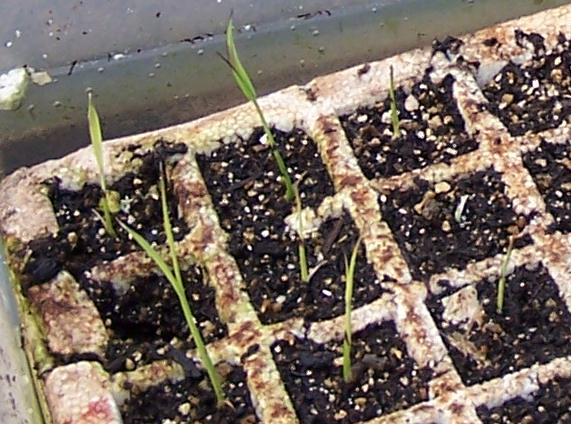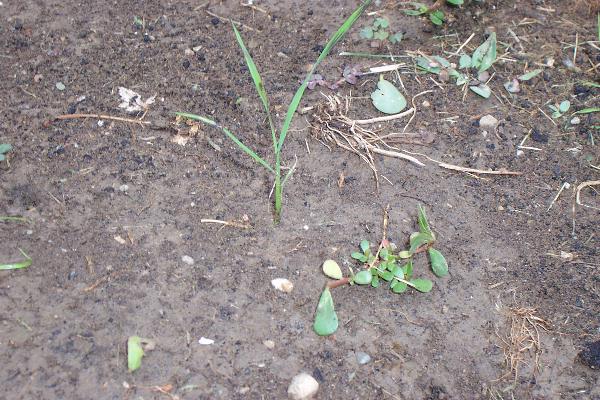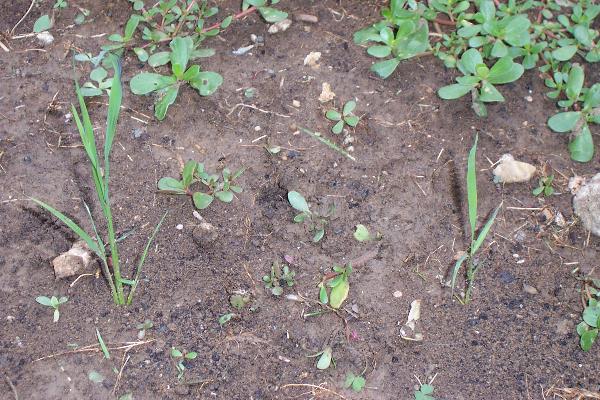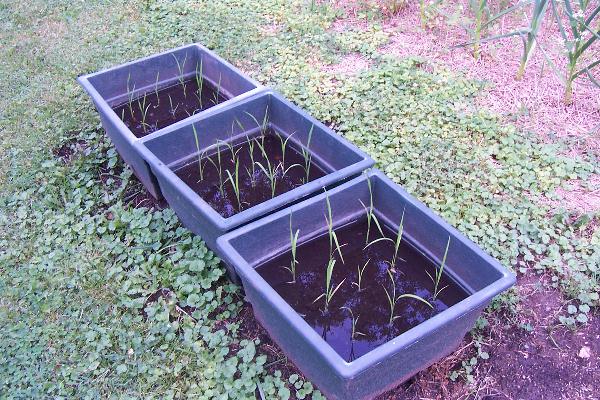
Rice Cultivation
2004 Photo Update

2004 Photo Update
SPRING
We're at it again, using seeds from last year's harvest (as usual). I've anticipated a busy year, so our rice and the garden, in general, is smaller than normal. In fact, our total rice 2004 rice growing effort will probably require less than 5 hours of work. That shows how lazy I am and how easy it is to grow rice in your garden.

Last autumn and winter, I was contacted by several gardeners who were interested in growing rice or were already cultivating it. Most were very enthusiastic, kind, and able to share a lot of valuable information.
I have, once again, fallen into the fantasy that rice can be grown without a paddy, so I'm trying two field grown experiments. In May, I planted some rice seeds directly in the soil and will not transplant them, at all. I also field planted a few very young seedlings, gently spreading their roots horizontally. They share a common bed of soil and I have provided a little water, every day. Just enough to keep the soil moist on the surface.
In both cases, the idea is to allow the rice to tiller (to develop multiple stalks) by letting the soil absorb the sun's heat. And to allow the roots to receive more oxygen. The plant, above, is from a seed that was planted directly in the earth. It will not be transplanted. I should mention that this has been a very warm, humid spring. Perfect for starting rice.

Here's a young seedling that was transplanted in May.

As of June 11, the transplants are doing okay. The one on the left has tillered a bit, but it doesn't appear to be especially robust. One rice contact is experimenting with growing rice in raised beds. Since raised bed gardening generates soft, humid soil, his approach could yield some interesting results. Also, he has developed a way to remove rice hulls by gluing a rubber disk onto the burrs of a standard grain mill. I hope to hear more from him soon.

And, of course, there are the mini-paddys. So far, the rain has kept the water at a nice level and they are thriving, as usual. If you are going to feed the masses, these little containers won't do the trick, unless you have a million of them and a lot of time. That's why, in our part of the world, we grow wheat and corn. But, for a home garden, this simple, reliable approach is too easy to ignore.
AUTUMN
A short comment from the land of "do-nothing" gardening. Our Ohio summer was the seventh coldest in history. Normally, we have an average of 21 days that reach a temperature of 90 degrees Fahrenheit (32 C) or warmer. This year we had one day that barely made it to 90. The cool weather was accompanied by considerable rain.
In addition, I was quite busy in my home office and, when I did spend time in the garden, it was usually to empty water from the mini-paddies and to keep the rice clear of competitors. In all, I'd estimate that I spent a total of about one hour with the rice. By mid-autumn, I was on the road. In fact, Kathy had to bring the grain in.
Despite my negligence, the mini-paddy rice thrived and the heads achieved full maturity by October. Unbelievable! The direct-planted rice; well, it lived through the growing season but never really made a crop. That deficiency is likely due to the variety of rice that I grow. One individual even offered some different seeds for trials, but they were hybrids and I prefer traditional strains. Straight from the ages and our ancestors' hands! I am an ignoramus, but I know what I like ....
The raised bed gardener, Charles Valentine of Arkansas, has recently contacted me. He has achieved some very successful results and Amberwaves has devoted a web page to his interesting work.